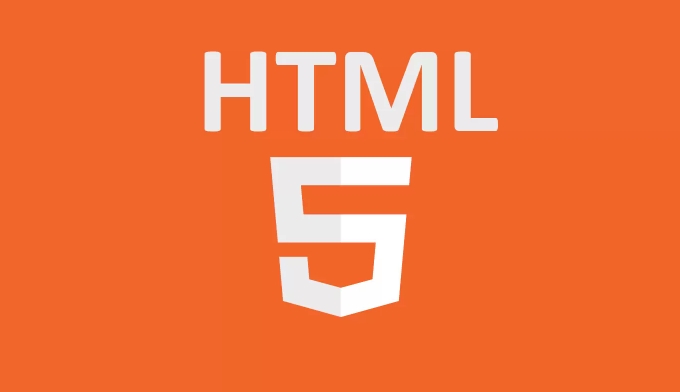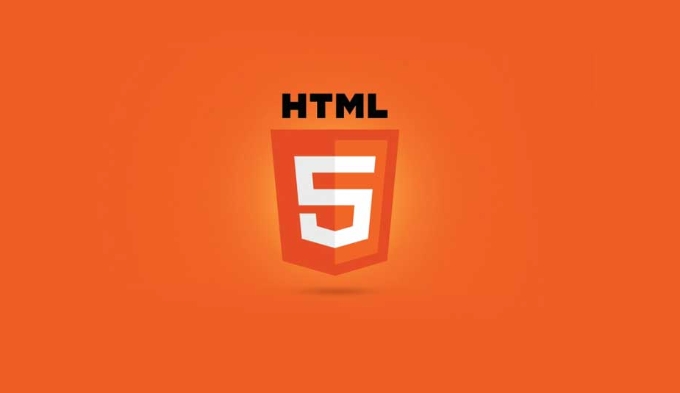Structuring page layout with HTML `` and `` elements.
Jul 02, 2025 pm 03:52 PMUse

Laying pages with HTML和elements is actually a very practical approach. Although these two labels are simple, their rational use can make the structure clearer and the semantics clearer, especially in responsive design and SEO optimization.
 ` elements." />
` elements." /> Why choose <div> and <code><span></span> ?
<div> is a block-level element, which is often used to divide the structural areas of the page, such as the header, content area, sidebar, etc. It has no default style itself, it depends entirely on you to control it, and it has high flexibility. <img src="/static/imghw/default1.png" data-src="https://img.php.cn/upload/article/000/000/000/175144274766174.jpeg" class="lazy" alt="Structuring page layout with HTML `<div>` and `<span>` elements."> ` elements." /><p> <code><span></span> is an inline element, usually used to wrap a small piece of text or content, suitable for local style adjustments or script operations. For example, highlight a few words, dynamically modify some content, etc.
They do not have their own meanings like semantic tags (such as <header></header> , <article></article> ), but they are still very common in actual development, especially when highly custom structures are required.
 ` elements." />
` elements." /> How to use <div> to build a basic page structure?<p> Most web pages can be divided into several main parts: top navigation, main content area, sidebar, bottom information. You can organize these blocks with multiple <code><div> :<pre class='brush:php;toolbar:false;'> <div id="header">Here is the website title or navigation</div>
<div id="main">
<div id="content">The main content is here</div>
<div id="sidebar">Sidebar content</div>
</div>
<div id="footer">footer information</div></pre><p> This writing structure is clear and can easily implement various arrangements with CSS layout (such as Flexbox or Grid). Each <code><div> can be styled or behavior individually via id or class .
<span> What scenarios are suitable for?
<span> What scenarios are suitable for? Because <span> is an inline element, it is more suitable for inserting some style changes or interactive functions in the middle of text. for example:
- Add color or background to the keywords in a paragraph
- Embed icons in buttons or load status prompts
- Dynamically update a number or status information
For example:
<p>Your account balance is: <span class="highlight">$100.00</span></p>
This allows the "$100.00" part to be highlighted without affecting the overall layout.
Several common misunderstandings and suggestions
Sometimes newbies abuse <div> and <code><span></span> , resulting in structural confusion. Here are a few tips:
- Don't over-neck, keeping the structure flat helps maintain
- Try to use more semantic tags (such as
<nav></nav>,<section></section>) to enhance accessibility and SEO - When you need layout, you prioritize modern layout methods (Flexbox, Grid) instead of relying solely on stacking
- If you just want to change part of the text style, use
<span>instead of creating a new<div><p> Basically that's it. Although they are simple, they can make your HTML structure clear and efficient if used properly.</p></div> - If you just want to change part of the text style, use
The above is the detailed content of Structuring page layout with HTML `` and `` elements.. For more information, please follow other related articles on the PHP Chinese website!

Hot AI Tools

Undress AI Tool
Undress images for free

Undresser.AI Undress
AI-powered app for creating realistic nude photos

AI Clothes Remover
Online AI tool for removing clothes from photos.

Clothoff.io
AI clothes remover

Video Face Swap
Swap faces in any video effortlessly with our completely free AI face swap tool!

Hot Article

Hot Tools

Notepad++7.3.1
Easy-to-use and free code editor

SublimeText3 Chinese version
Chinese version, very easy to use

Zend Studio 13.0.1
Powerful PHP integrated development environment

Dreamweaver CS6
Visual web development tools

SublimeText3 Mac version
God-level code editing software (SublimeText3)

Hot Topics
 How do I embed PHP code in an HTML file?
Jun 22, 2025 am 01:00 AM
How do I embed PHP code in an HTML file?
Jun 22, 2025 am 01:00 AM
You can embed PHP code into HTML files, but make sure that the file has an extension of .php so that the server can parse it correctly. Use standard tags to wrap PHP code, insert dynamic content anywhere in HTML. In addition, you can switch PHP and HTML multiple times in the same file to realize dynamic functions such as conditional rendering. Be sure to pay attention to the server configuration and syntax correctness to avoid problems caused by short labels, quotation mark errors or omitted end labels.
 How do I minimize the size of HTML files?
Jun 24, 2025 am 12:53 AM
How do I minimize the size of HTML files?
Jun 24, 2025 am 12:53 AM
To reduce the size of HTML files, you need to clean up redundant code, compress content, and optimize structure. 1. Delete unused tags, comments and extra blanks to reduce volume; 2. Move inline CSS and JavaScript to external files and merge multiple scripts or style blocks; 3. Simplify label syntax without affecting parsing, such as omitting optional closed tags or using short attributes; 4. After cleaning, enable server-side compression technologies such as Gzip or Brotli to further reduce the transmission volume. These steps can significantly improve page loading performance without sacrificing functionality.
 How has HTML evolved over time, and what are the key milestones in its history?
Jun 24, 2025 am 12:54 AM
How has HTML evolved over time, and what are the key milestones in its history?
Jun 24, 2025 am 12:54 AM
HTMLhasevolvedsignificantlysinceitscreationtomeetthegrowingdemandsofwebdevelopersandusers.Initiallyasimplemarkuplanguageforsharingdocuments,ithasundergonemajorupdates,includingHTML2.0,whichintroducedforms;HTML3.x,whichaddedvisualenhancementsandlayout
 What is the declaration, and what does it do?
Jun 24, 2025 am 12:57 AM
What is the declaration, and what does it do?
Jun 24, 2025 am 12:57 AM
Adeclarationisaformalstatementthatsomethingistrue,official,orrequired,usedtoclearlydefineorannounceanintent,fact,orrule.Itplaysakeyroleinprogrammingbydefiningvariablesandfunctions,inlegalcontextsbyreportingfactsunderoath,andindailylifebymakingintenti
 How do I use the element to represent the footer of a document or section?
Jun 25, 2025 am 12:57 AM
How do I use the element to represent the footer of a document or section?
Jun 25, 2025 am 12:57 AM
It is a semantic tag used in HTML5 to define the bottom of the page or content block, usually including copyright information, contact information or navigation links; it can be placed at the bottom of the page or nested in, etc. tags as the end of the block; when using it, you should pay attention to avoid repeated abuse and irrelevant content.
 How do I use the tabindex attribute to control the tab order of elements?
Jun 24, 2025 am 12:56 AM
How do I use the tabindex attribute to control the tab order of elements?
Jun 24, 2025 am 12:56 AM
ThetabindexattributecontrolshowelementsreceivefocusviatheTabkey,withthreemainvalues:tabindex="0"addsanelementtothenaturaltaborder,tabindex="-1"allowsprogrammaticfocusonly,andtabindex="n"(positivenumber)setsacustomtabbing
 What is the purpose of the input type='range'?
Jun 23, 2025 am 12:17 AM
What is the purpose of the input type='range'?
Jun 23, 2025 am 12:17 AM
inputtype="range" is used to create a slider control, allowing the user to select a value from a predefined range. 1. It is mainly suitable for scenes where values ??need to be selected intuitively, such as adjusting volume, brightness or scoring systems; 2. The basic structure includes min, max and step attributes, which set the minimum value, maximum value and step size respectively; 3. This value can be obtained and used in real time through JavaScript to improve the interactive experience; 4. It is recommended to display the current value and pay attention to accessibility and browser compatibility issues when using it.
 How do I associate a label with a form element using the for attribute?
Jun 21, 2025 am 09:58 AM
How do I associate a label with a form element using the for attribute?
Jun 21, 2025 am 09:58 AM
The most direct way for label tags to be associated with form elements is to use the for attribute and be consistent with the form element's id. The specific steps are as follows: 1. Set the id for the form element; 2. Set the same for attribute value in the corresponding label label. For example, if the id of input is "username", the for attribute of label should also be set to "username". This not only realizes the function of clicking on the tag to focus the input box, but also improves the friendliness of barrier-free access. Compared with nesting methods, using for and id is more flexible, clear and controllable. Pay attention to avoid spelling errors, duplicate ids, and confusing name and id.






